Abstract
A notable trend in vegetable production in Brazil is the production of tomatoes. According to data for 2022, tomatoes boast the highest agricultural yield, recording 69.9t/ha. This high yield is thought to be due to advances in tomato cultivation techniques and more efficient land use. In Brazil, tomato cultivation is particularly thriving in the warmer regions, where suitable climatic conditions and irrigation techniques support its productivity. In addition, when looking at the production volume of tomatoes by use, it is mainly divided into processed tomatoes (for tomato sauce and ketchup) and fresh tomatoes. Processing production plays an important role not only for domestic consumption in Brazil, but also for export. Tomatoes for processing are produced in large quantities, especially in agricultural areas such as the states of São Paulo and Minas Gerais. Furthermore, land use for tomato cultivation involves efficient land management and tends to be prioritized over other vegetables. This is because the high profitability of tomatoes is an important factor in ensuring farmers’ profits.
Production(yield(by vegetable))
The trend in vegetable production in Brazil is particularly notable in tomato production. From 1961 to 2022, tomatoes have the highest production among all vegetables in Brazil. In particular, in 2020, the highest ever yield of 72.2t/ha was achieved, demonstrating peak productivity. This figure reflects the results of technological innovation and efficient land use in tomato cultivation, and is due primarily to improvements in agricultural techniques, climatic conditions, and irrigation techniques. After that, in 2022, tomato production volume will be 96.8% of the peak, showing a slight decrease, but still maintaining high productivity. This decline may have been influenced by market fluctuations in agriculture, changes in land use efficiency, or demand for other crops. Nevertheless, tomatoes remain Brazil’s main agricultural product, not only for domestic consumption but also to supply export markets. Due to the stable and high level of tomato production, the importance of tomato cultivation techniques and land management is emphasized as one of the competitive advantages of Brazilian agriculture.
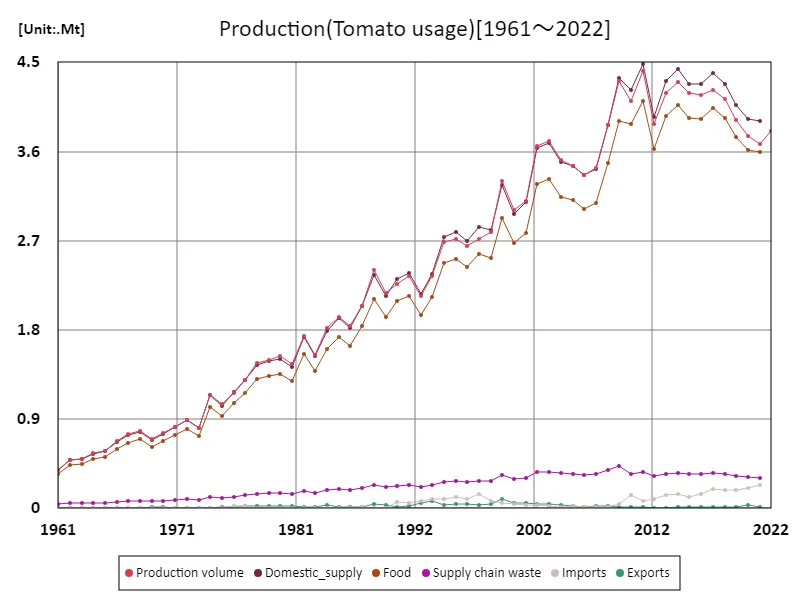

The maximum is 4.48Mt[2011] of Domestic_supply, and the current value is about 87.2%
Yield(by vegetable)
Among vegetable production in Brazil, tomato is a particularly noteworthy crop, and its production volume has shown significant growth throughout the data from 1961 to 2022. In 2020, tomato production reached 72.2t/ha, the highest ever recorded. This peak figure was achieved through a combination of advances in tomato growing techniques, improved irrigation techniques and favourable weather conditions. Brazil’s vast farmland and warm climate are ideal for tomato production, and production is particularly concentrated in agricultural areas such as the states of São Paulo and Minas Gerais. Tomato production subsequently declined slightly, settling at 96.8% of its peak level in 2022. This decline may be due to land diversification, increased demand for other crops and market fluctuations. Nevertheless, tomatoes remain Brazil’s main agricultural product and continue to maintain high productivity, playing an important role in supplying both domestic consumption and exports. Tomato production reflects Brazil’s advances in agricultural technology and the results of efficient land use, and we can expect a stable supply to continue in the future.
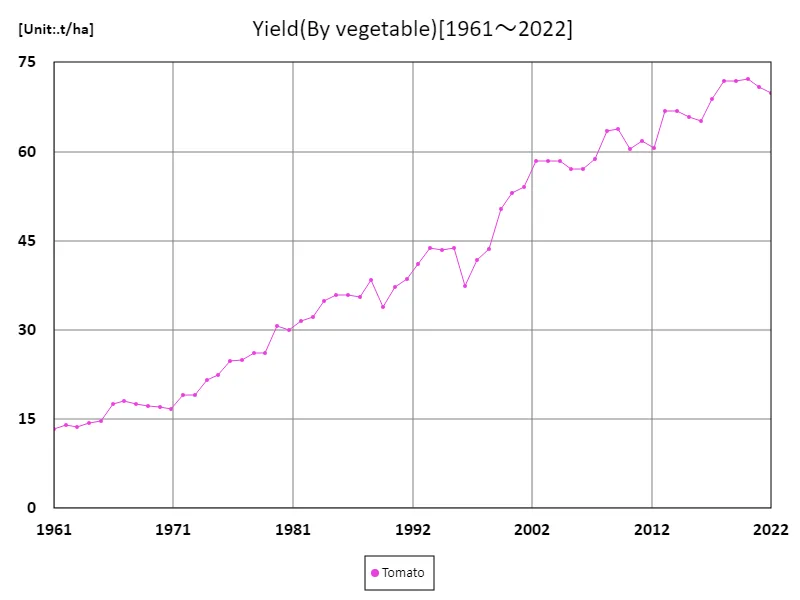

The maximum is 72.2t/ha[2020] of Tomato, and the current value is about 96.8%
Land use (by vegetables)
Looking at land use data for vegetable production in Brazil in 2022, tomatoes account for the largest and average land use with an area of 54.5 kha. This shows that tomatoes are a very important crop in Brazilian agriculture, with the area cultivated there far exceeding that of other vegetables. This area reflects Brazil’s vast agricultural land area combined with favorable climatic conditions, allowing large tracts of land to be used for tomato cultivation. The area cultivated with tomatoes remains stable at 54.5 kha, suggesting that the balance between demand and supply of tomatoes in Brazil is relatively stable. In addition to domestic consumption, tomatoes are also produced for processing and export, and this high demand is reflected in land use. Another feature of tomatoes is that they are grown in many different regions, so production is widespread and not concentrated in any particular area. Looking ahead, the cultivation area for tomatoes may fluctuate slightly due to competition with other vegetable production and fluctuations in market demand, but tomatoes are certain to continue to be an important agricultural product. As land use becomes more efficient and technological innovation progresses, it is expected that tomato productivity will continue to improve.
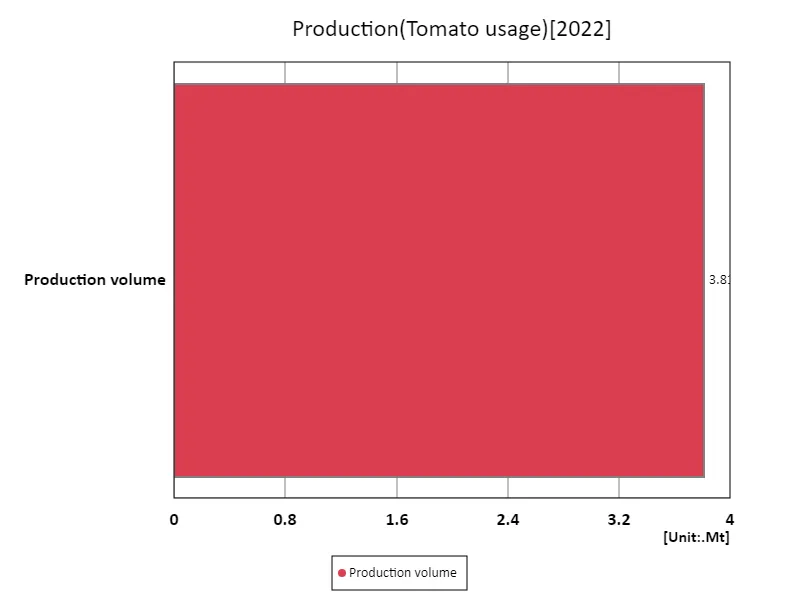

The maximum is 3.81Mt of Production volume, the average is 3.81Mt, and the total is 3.81Mt
Tomato usage
In 1961, Brazil’s tomato production reached its highest level with domestic supply of 4.48 million tons (Mt). This figure indicates that tomato production in Brazil at the time was concentrated for the domestic market, and that the main consumption was for processing and fresh consumption. This is likely due to the growing importance of tomatoes in Brazilian food culture during this period, leading to increased demand in home cooking and the restaurant industry. Since then, Brazilian tomato production has moved beyond domestic consumption to include the processing industry and the export market. In particular, demand for processed tomatoes, such as for tomato sauce and ketchup, increased, which promoted an increase in production volume. Furthermore, Brazil’s tomato production is stable, mainly for domestic supply, and has also played an important role for exports. The peak of domestic supply in 1961 indicates the important position of tomatoes in Brazilian agriculture, not only meeting domestic demand but also providing a basis for supplying world markets. Currently, tomato production in Brazil remains heavily dependent on the domestic market, but further growth is expected due to growing demand for tomatoes for export and processing.
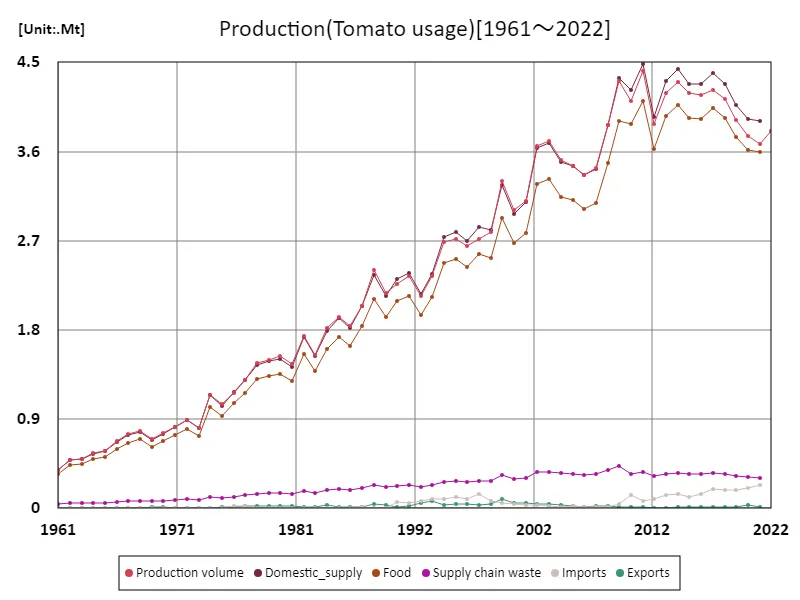

The maximum is 4.48Mt[2011] of Domestic_supply, and the current value is about 87.2%
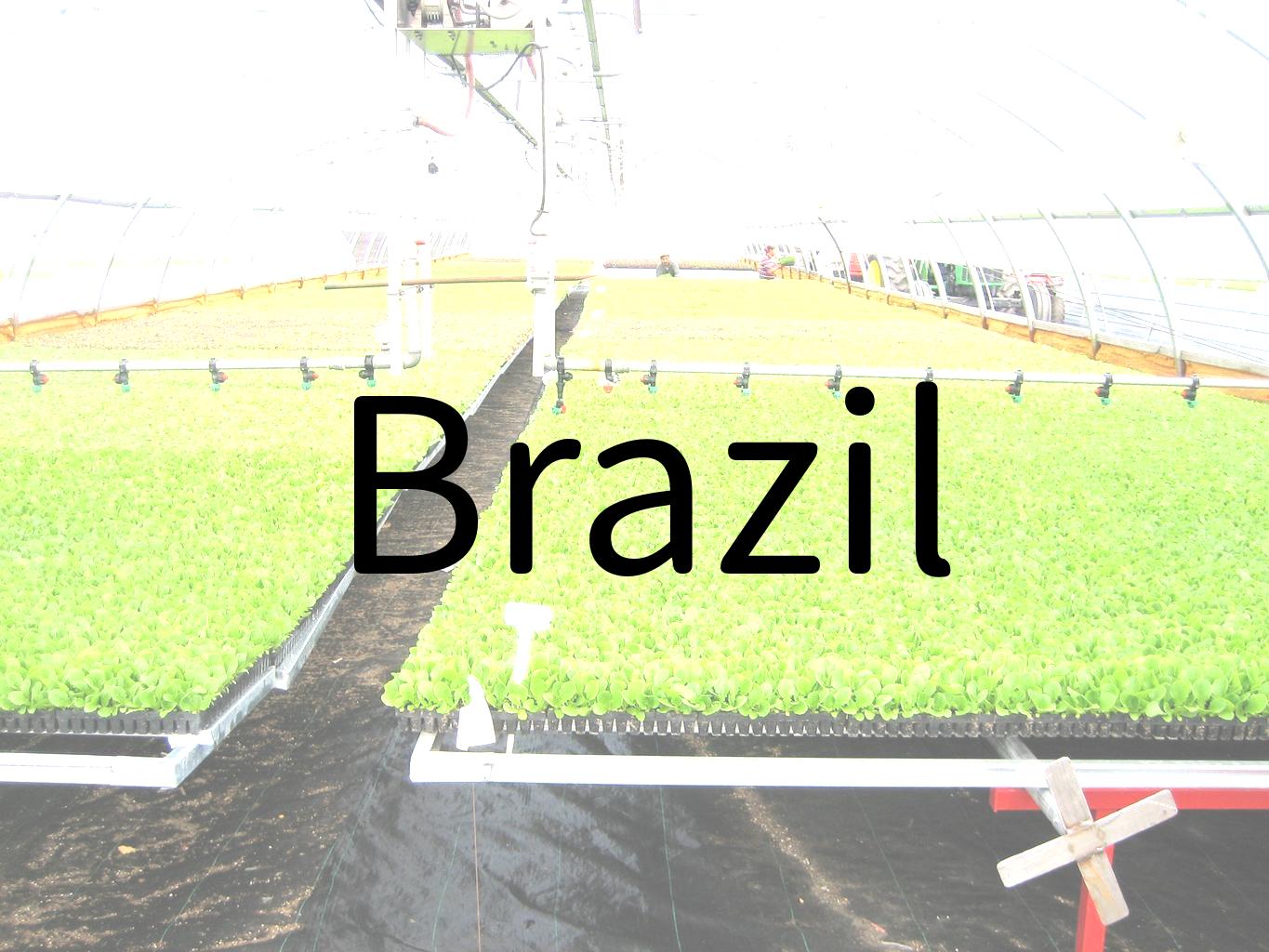


Comments